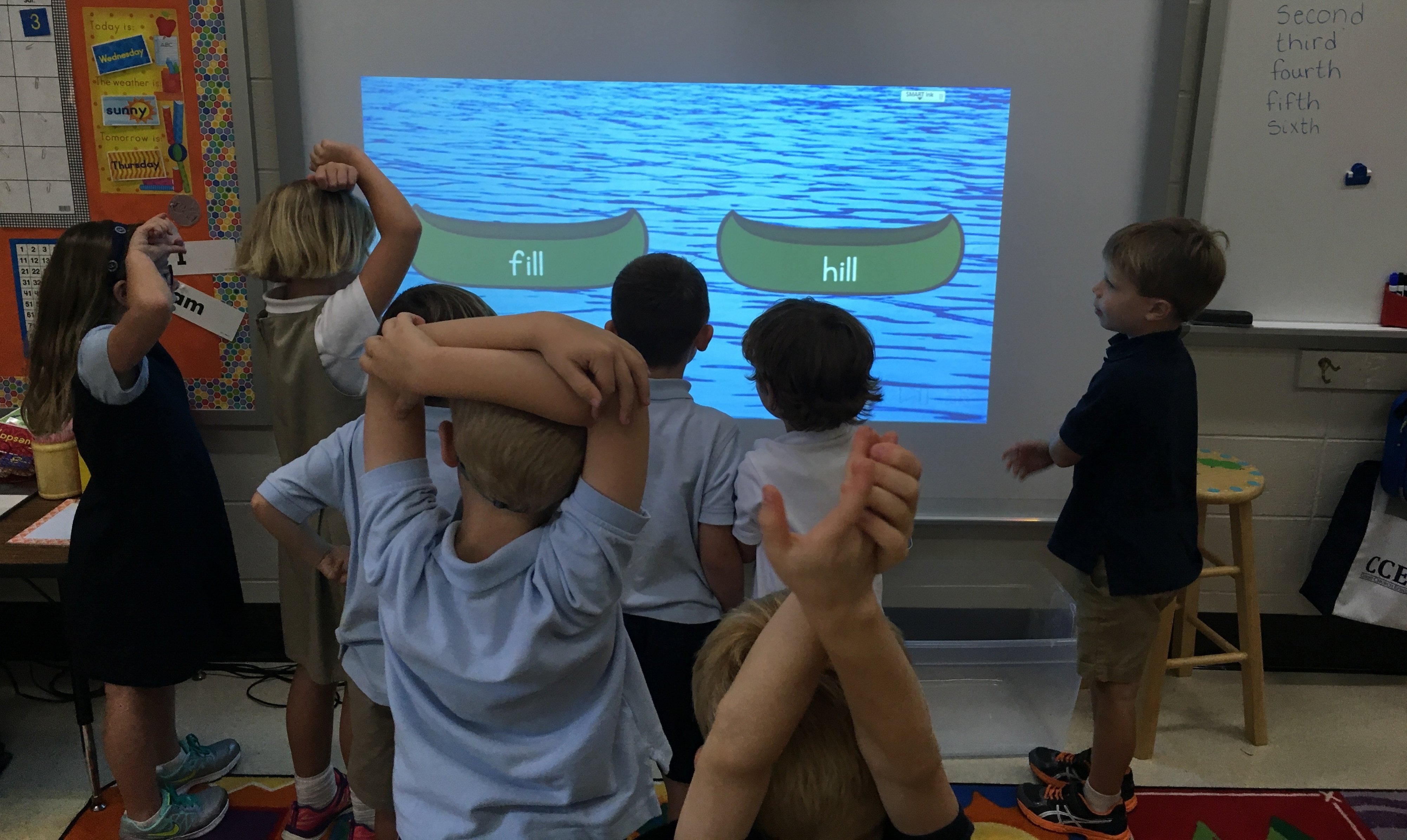
Why School Is the Optimal Setting for Cognitive-Motor Engagement
The Science of Helping Students Move to Learn
Dr. Lynne Kenney, the nation’s leading pediatric psychologist, and Dr. Julian Reed, Founder and CEO of ActivEd Inc., give their perspectives on the importance of integrating movement and learning in the classroom in a recent webinar.
About Active Classrooms Month
Active Schools, a large nonprofit organization in the US, runs a campaign known as Active Classrooms Month where teachers, principals and administrators are informed of ways they can increase movement in the classroom.
Physical Activities in the Classroom
Teachers are looking for quick and easy programs that integrate learning and movement that work to calm a child’s nervous system and rapidly activate their brain. Kids enjoy both agency and the fun these activities provide all while improving their on-task behavior.
Movement Activities
Dr. Kenney uses activities in her practice involving simple motor movements such as tapping or stomping that increase cognitive demands. The combination of counting, incorporating movement along with rhythm and using colors to guide direction helps to engage students in both movement and learning.
Movement is important for kids but it doesn’t have to be complicated or planned. It can be as simple as shooting basketballs in the driveway! Kids may thrive in different programs so it is important to find the right program for your students. Here are 30 unique activity programs you can try with kids.
Why Movement Matters
Just 20 minutes of movement increases blood flow which helps with engagement, concentration, memory and academic achievement. The prefrontal cortex is also activated with movement and improves skills like planning, organizing and goal setting.
How much physical activity are kids getting?
Kids are moving less due to higher consumption of digital media and gaming. During COVID, the CDC projected a 2.4% increase in obesity due to less movement. As mentioned, exercise doesn’t have to be planned and can be as simple as playing outside. Play is a form of physical and cognitive learning and partnerships such as the US Play Coalition educate the public on its importance.
The Benefits of Movement
- Improves Health: Just 10 minutes of movement increases blood flow and improves the function of neurotransmitters. Keeping up this habit will also increase the strength of bones and muscles.
- Boosts Cognition: Neurons can communicate better and previous pathways evolve into highways. The hubs within the brain talk to each other more efficiently improving cognition, behavior and social engagements leading to better academic performance.
- Improves Academic Performance: Kids who are physically fit show higher academic achievement and exhibit greater on-task behavior.
- Builds Self-Esteem and Confidence: Children show higher levels of motivation, agency, creativity and are able to better collaborate with others.
Movement Ideas
- Adding Zero Hour: Making mornings active by getting outside and walking for 20-30 minute improves neurotransmitter production for the entire day
- Get Some Sunshine: Aiming to get some time in the sun also works to improve the efficiency of brain functioning.
- Physical Activity Breaks: Setting time aside during class to incorporate movement improves cognition, social cohesion and helps to motivate students. Try incorporating activities such as yoga or dance throughout the day for 5 minutes at a time. This movement will not only improve cognition, but will strengthen the central nervous system.
- Active Learning: Incorporating movement into lessons helps engage both the brain and body. WalkAbouts curriculum integrates movement and learning while abiding by state and national standards and is proven to increase focus, academic engagement and performance.
What is the science behind the benefits of movement?
Movement works to improve the brain’s function in several ways. As mentioned, it increases blood flow and improves executive functioning. There is also BDNF, a growth factor in the brain, that is regulated by movement and stimulates the production of neurons. GDNF, a protein in the brain that promotes survival of neurons, is also impacted through movement. Other chemicals in the brain such as catecholamines and dopamine are also impacted positively, leading to better learning outcomes.
Tips for Adding Physical Activity to Your Classroom: In-Person and Virtual
- Re-arrange Student Desks: Get creative and change your classroom set-up to promote greater levels of movement in the classroom. Try setting up stations that require movement around desks or setting up standing stations for reading.
- Moving for 5 Minutes: Set up a schedule that allows movement breaks throughout the day. Create a space for this, such as the front of the classroom. You can successfully encourage students to move in a smaller space by incorporating arm movements or squatting.
- Count by 4’s: Humans are naturally musical beings. Learning can be built using this counting system to increase student engagement.
Toolkits, Trainings and Activities
- Try Walkabouts for 60 days and start integrating movement into your lessons
- Learn more about Dr. Lynne Kenney’s practice here
- Explore engaging brain primers to help keep kids engaged and moving
- Discover more resources to help you participate in Active Classrooms Week





